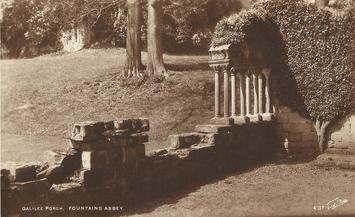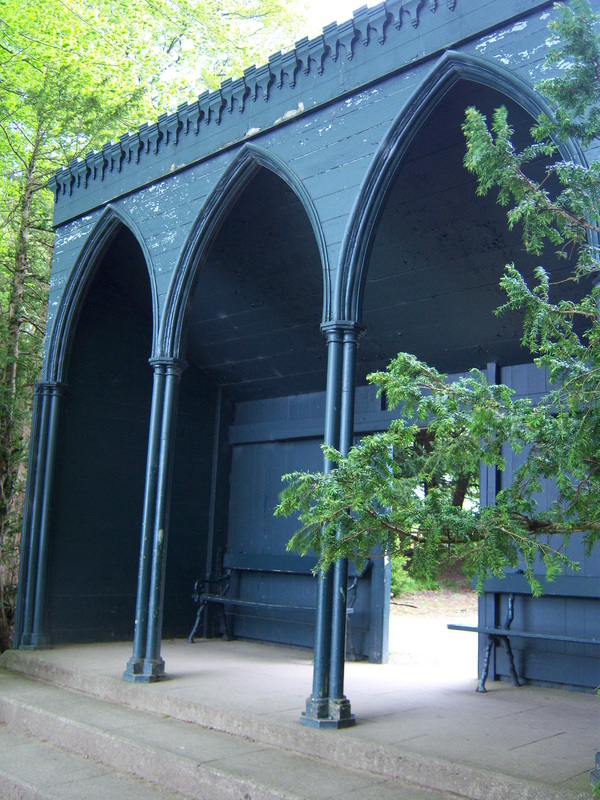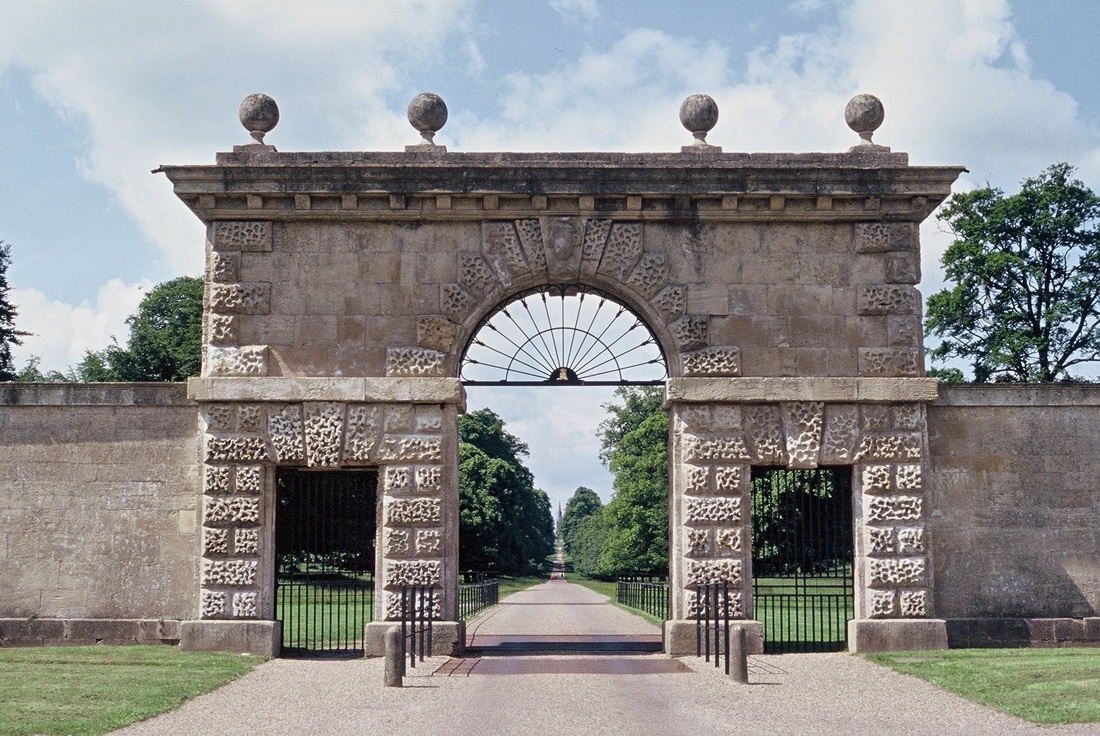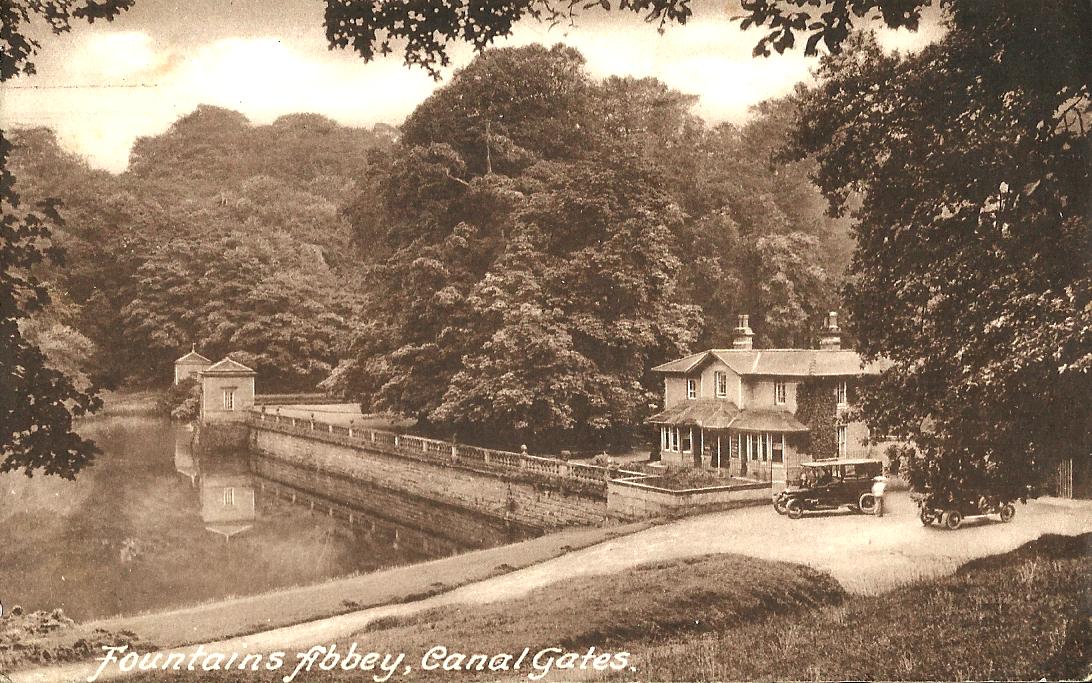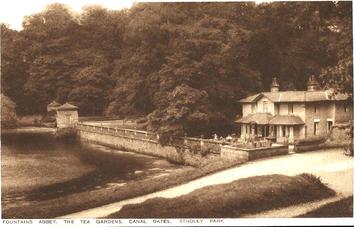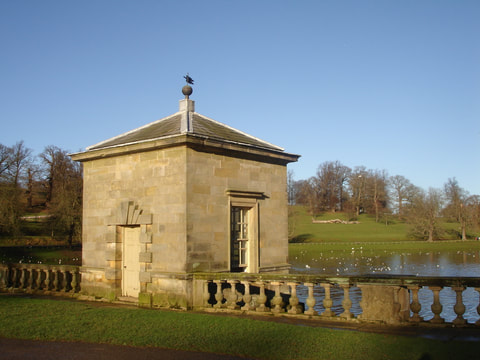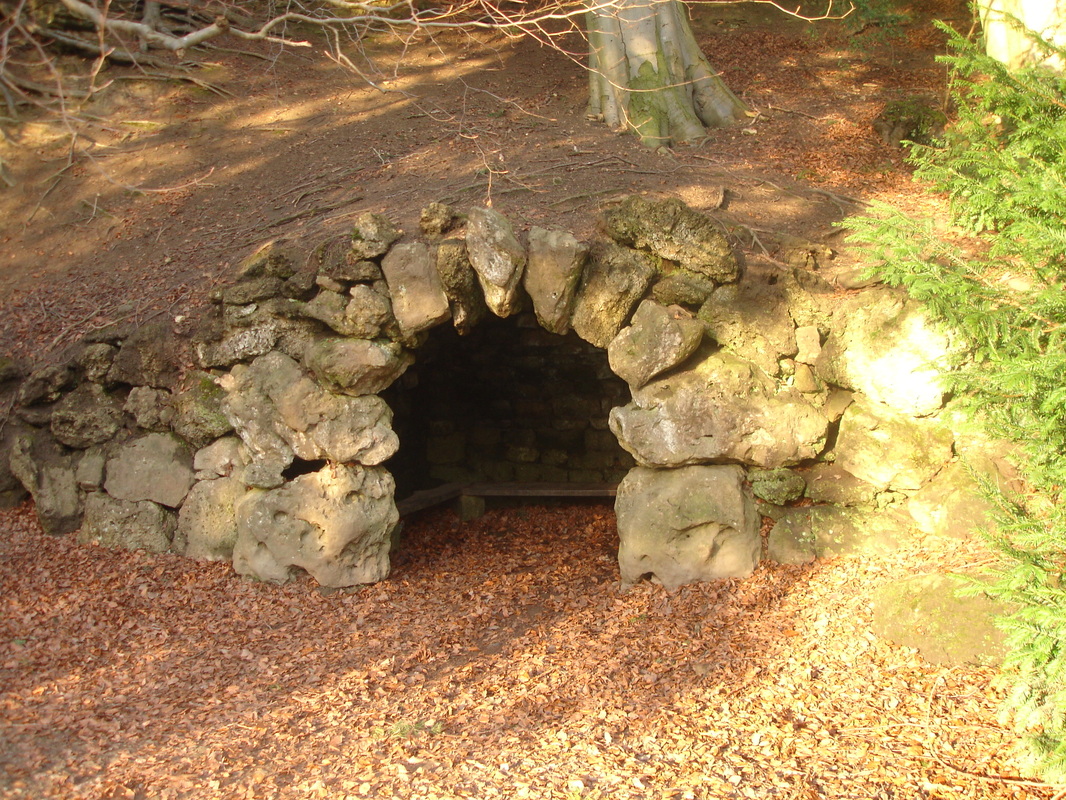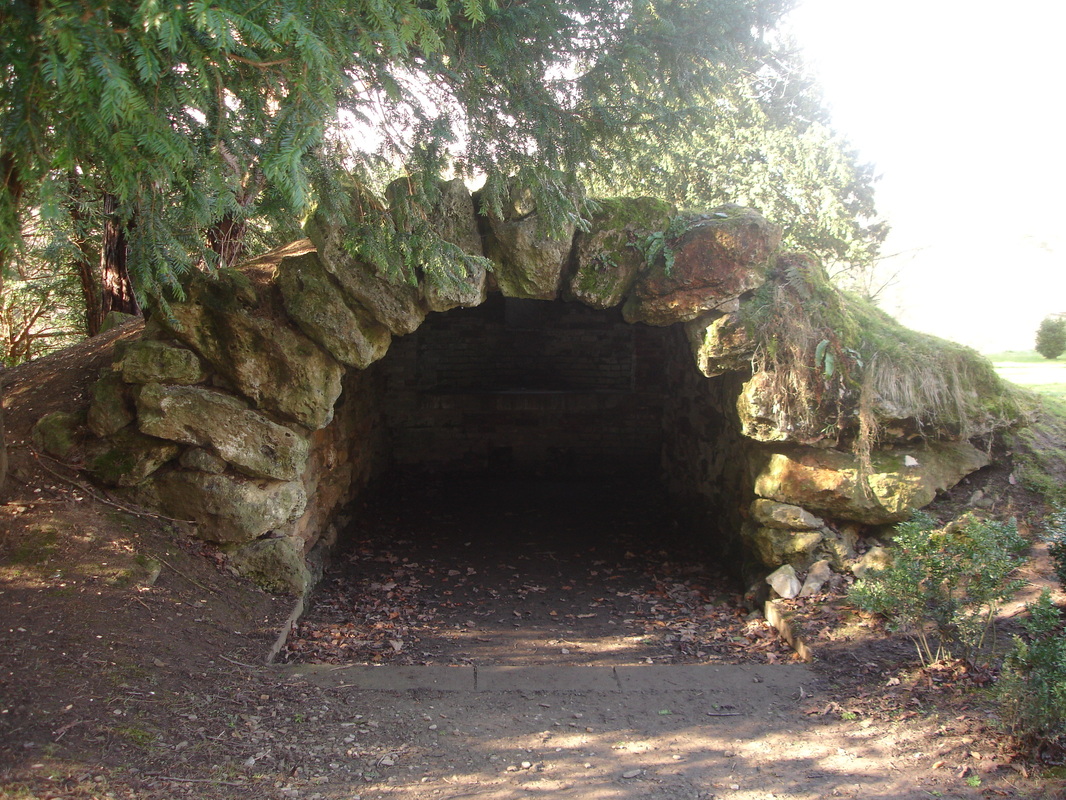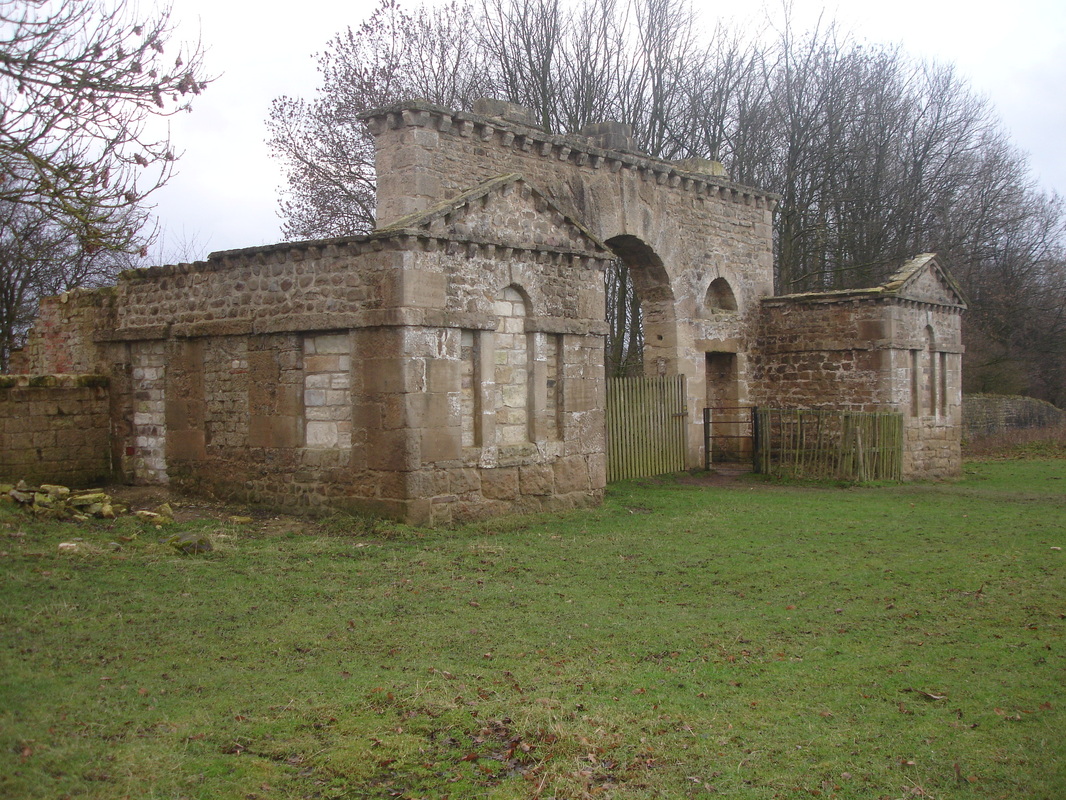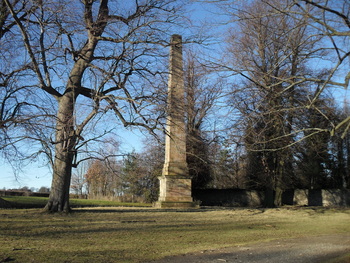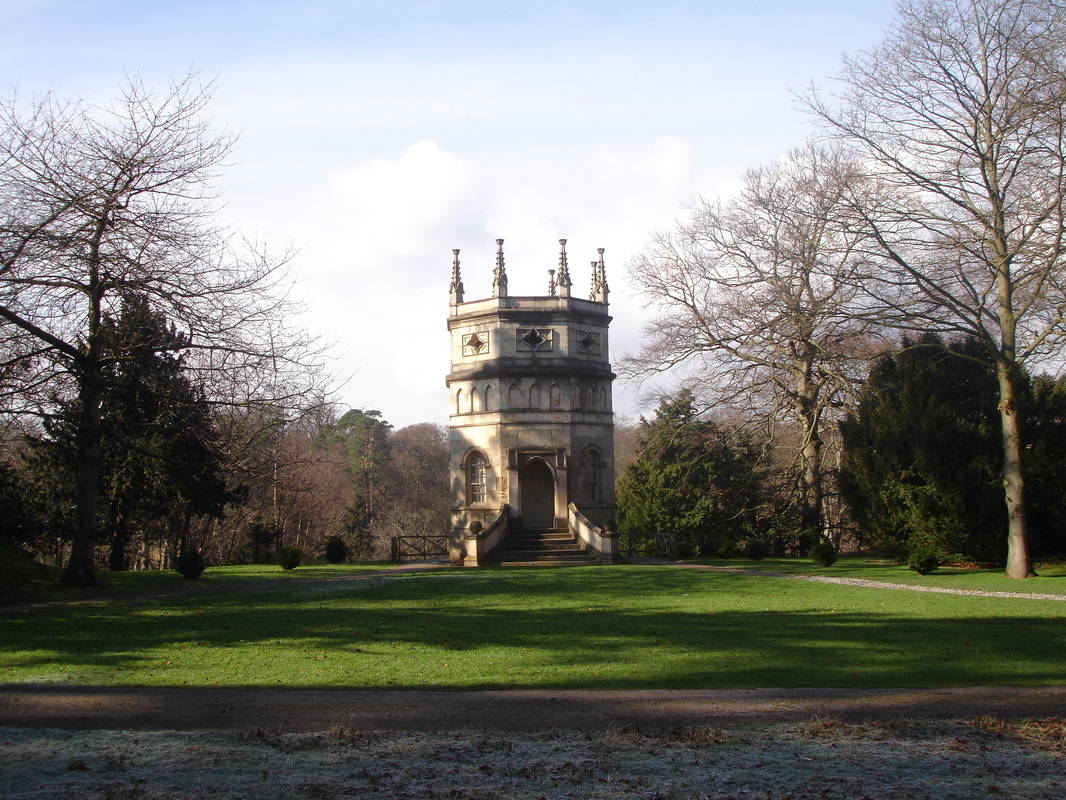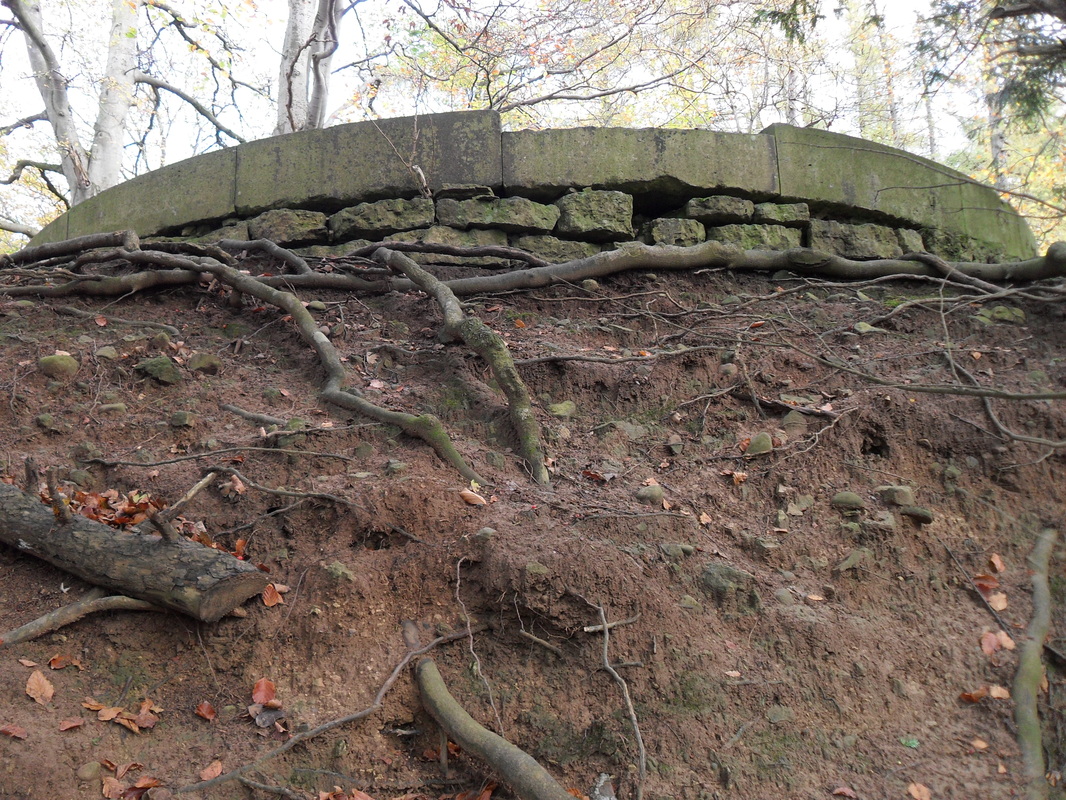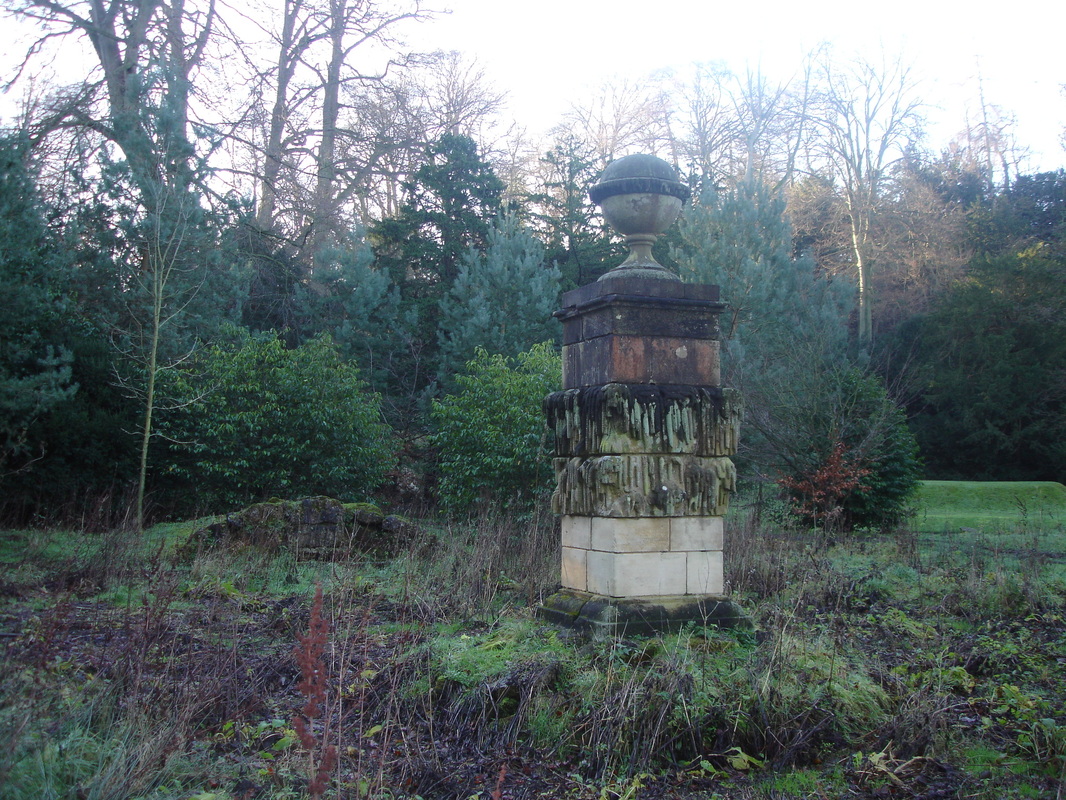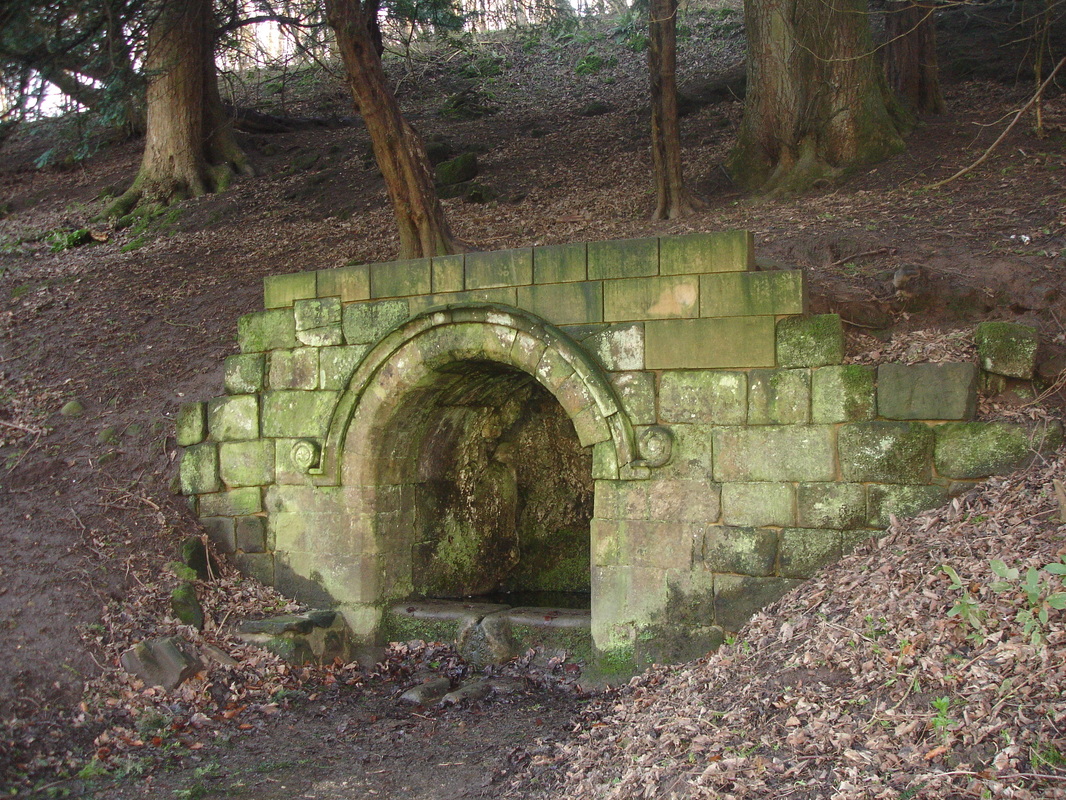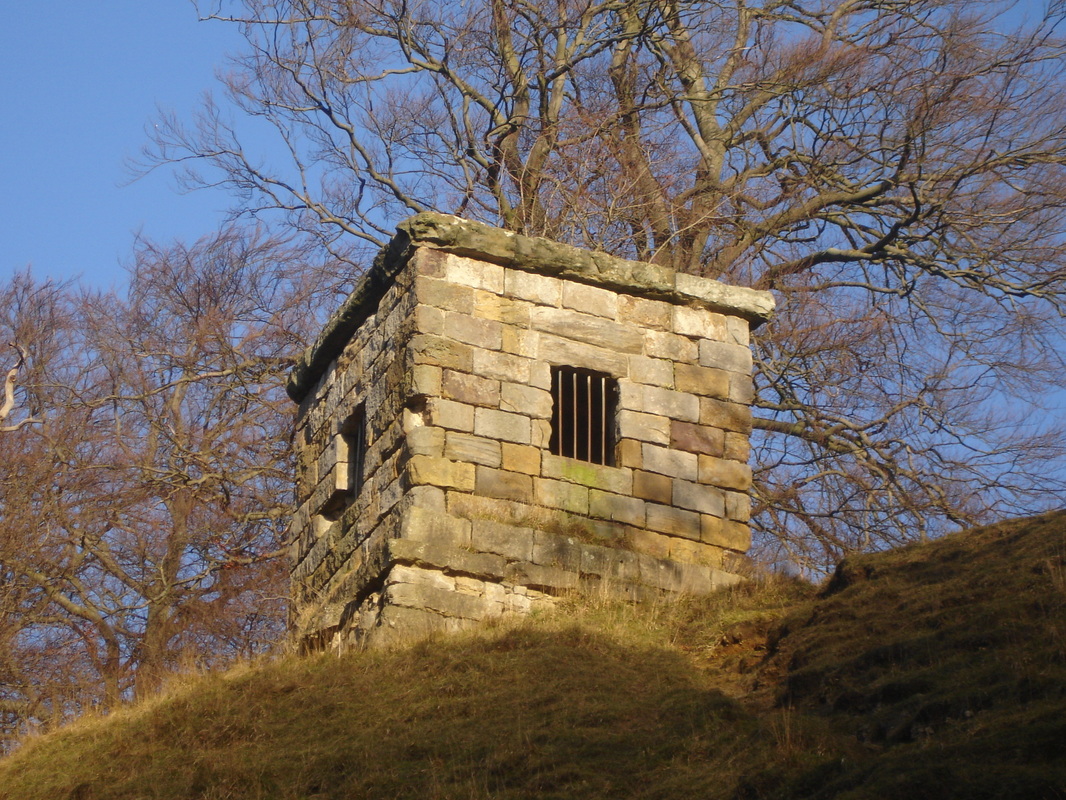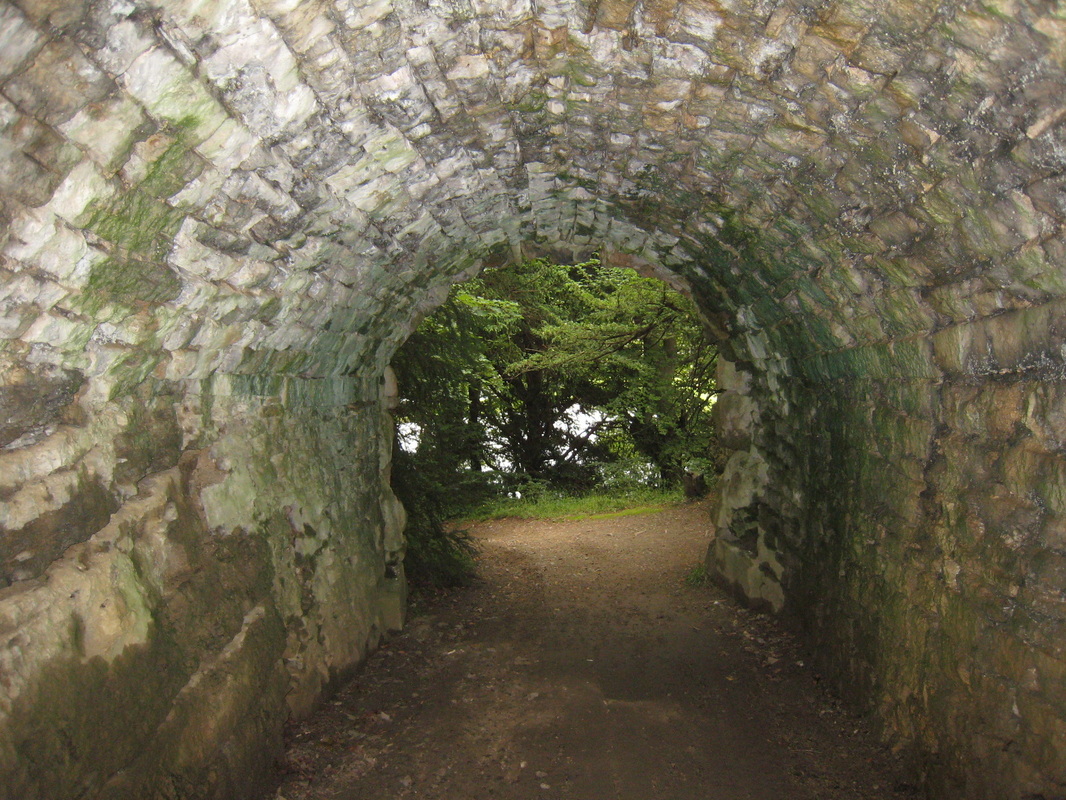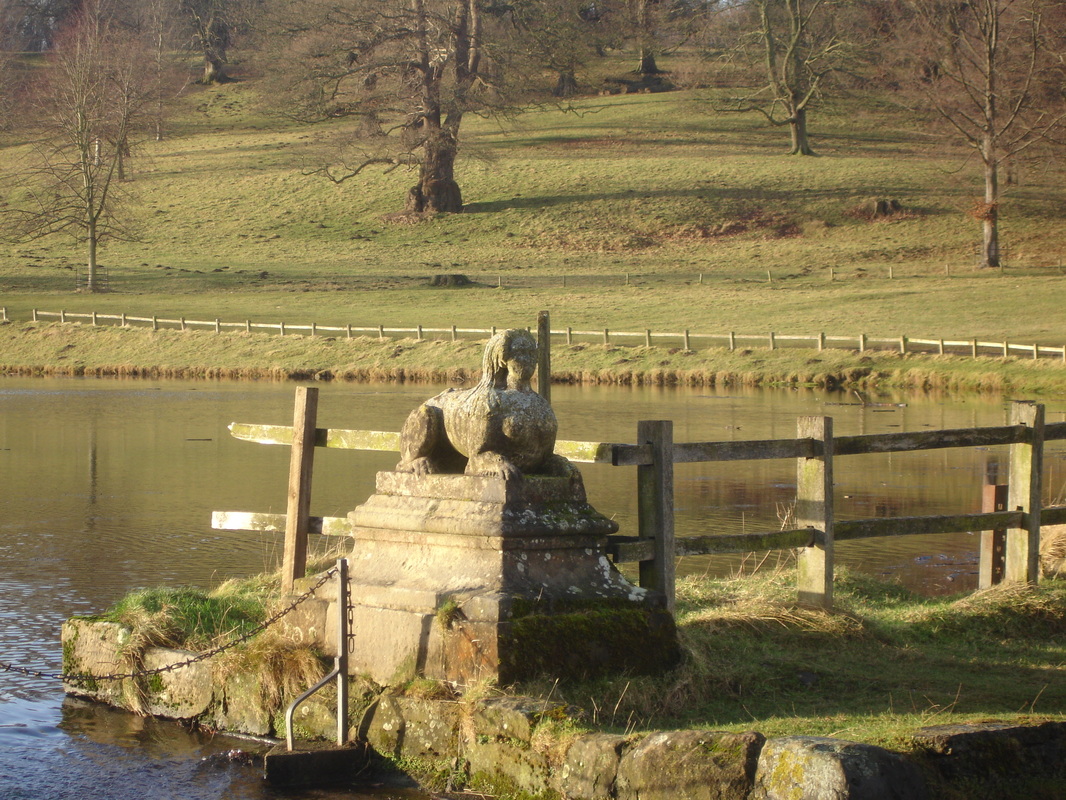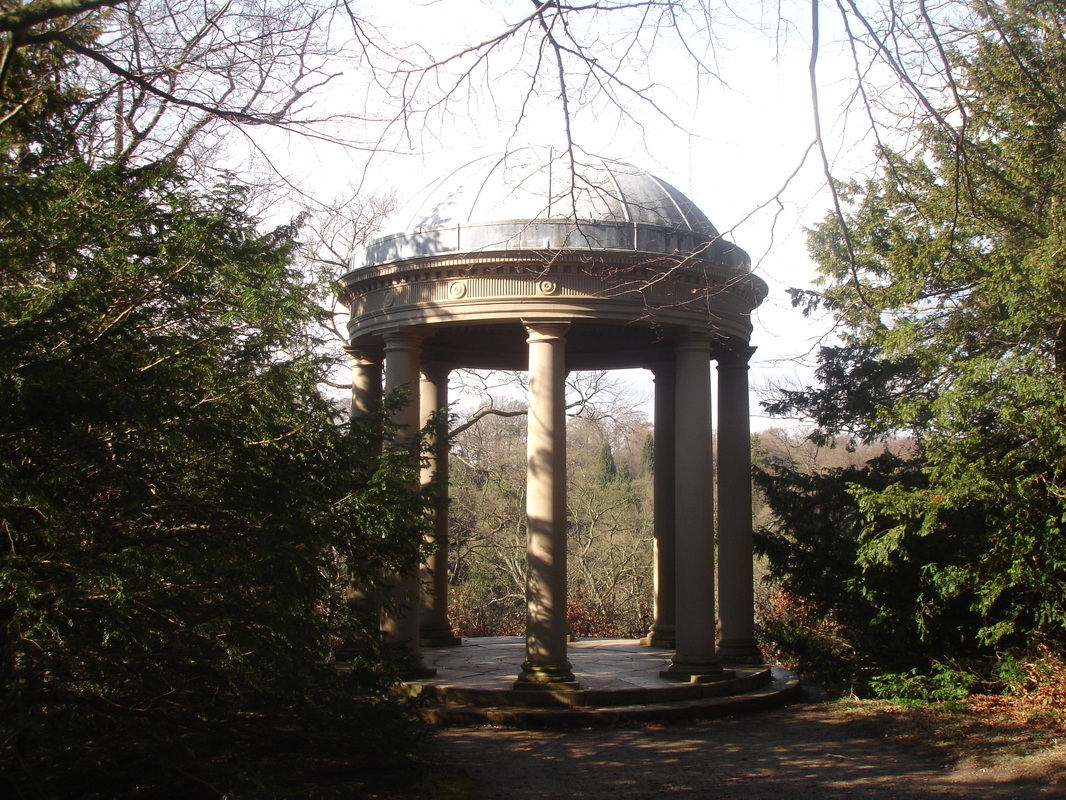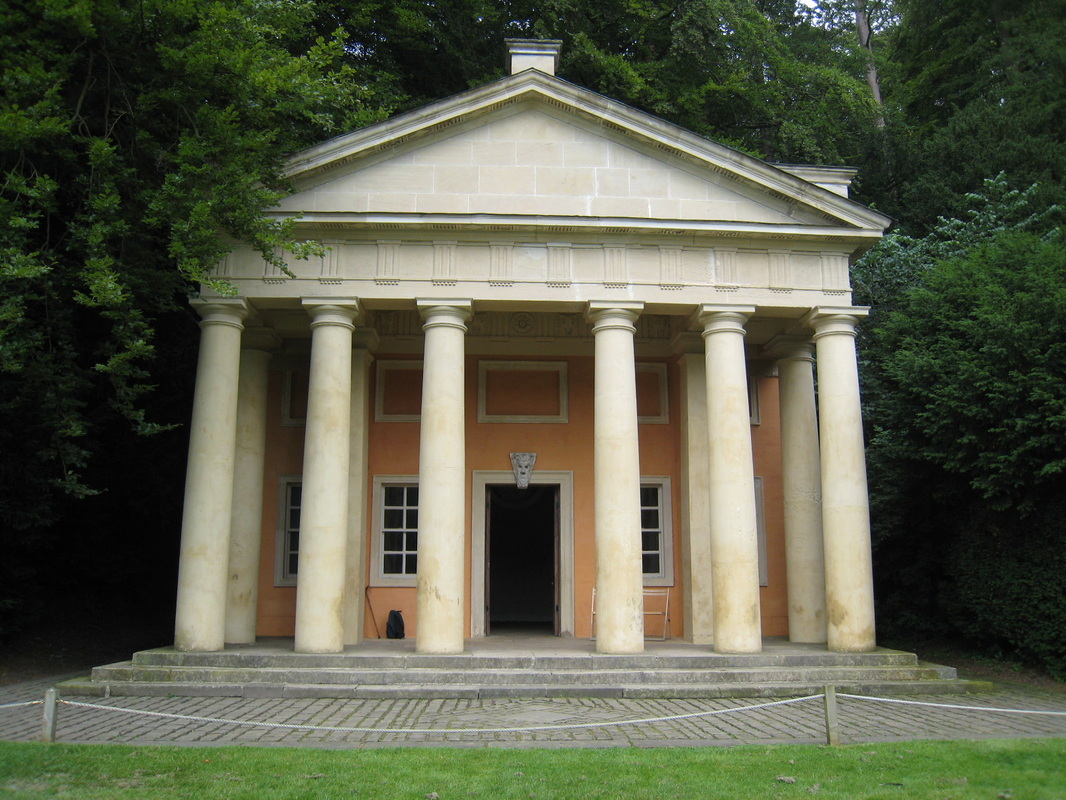LINDRICK WITH STUDLEY ROYAL AND FOUNTAINS
Galilee Porch SE 274 682
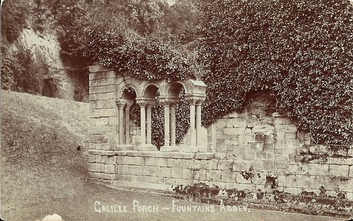
The Galilee Porch at Fountains Abbey was probably built in the late 12th century. Part of the arcading was later reconstructed at the abbey as a decoretive feature.
Anne Boleyn's Seat SE 283 685
Banqueting House SE 278 689
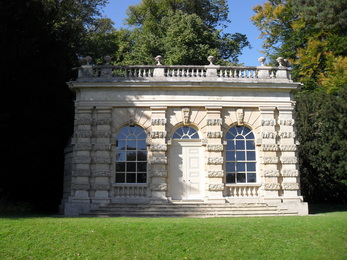
The Banqueting House at Studley was probably designed by Colen Campbell as an orangery. It was built for John Aislabie from 1728 to 1732. The mason was Thomas Buck under the direction of Robert Doe. The interior woodcarving is by Richard Fisher of York.
East Gate SE 288 699
Fishing Tabernacles SE 280 090
The Grotto SE 280 686
The Kitchen SE 280 689
Mackershaw Lodges SE 286 685
Obelisk SE 274 692
|
In 1742, William had a stepped wooden pyramid built as a monument to his father.
The present Obelisk was erected in about 1805 for William's daughter, Elizabeth, the wife of Charles Allanson of Bramham. The structures were a focal point at the end of the vista through Studley Park to Ripon Cathedral. When St Mary's Church was built in 1871-2, the Obelisk was moved out of line. |
